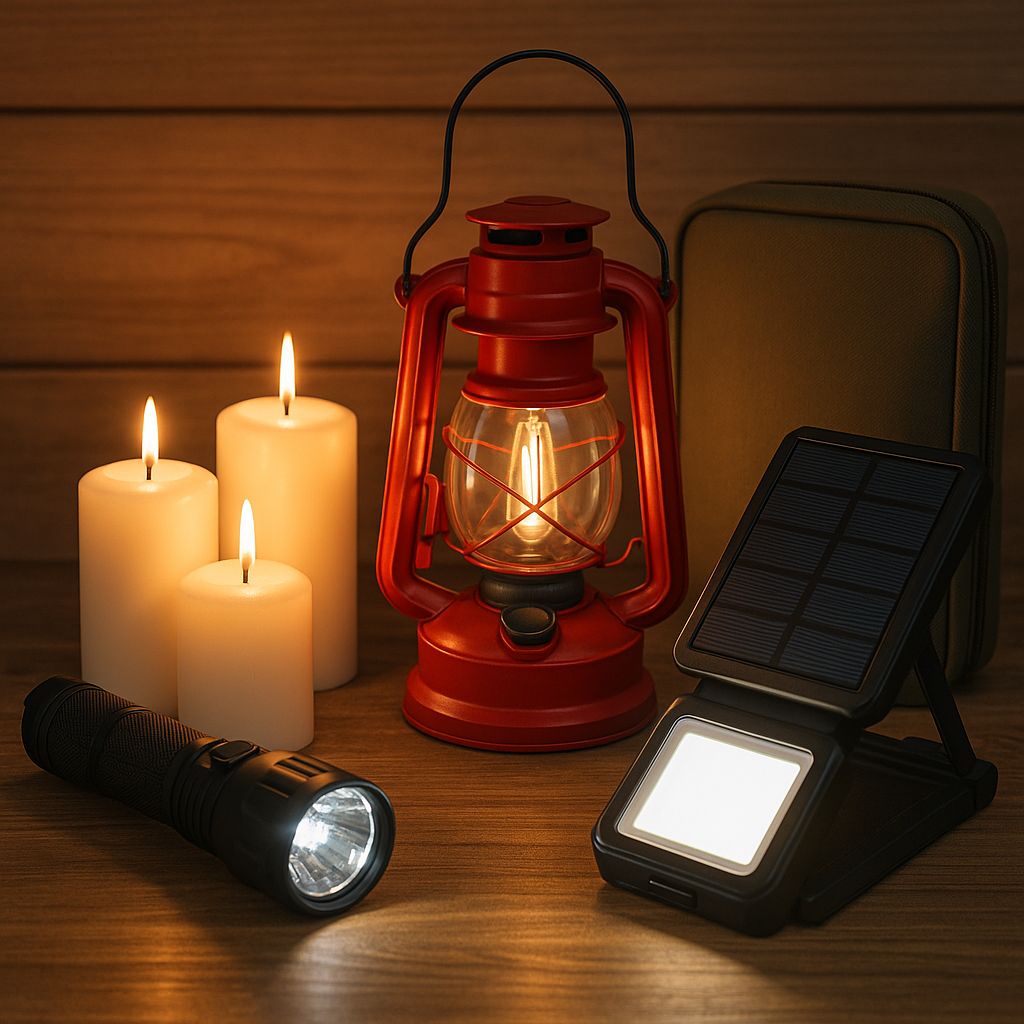When the grid fails during a major SHTF (Sh*t Hits The Fan) event, light becomes more than just convenience—it becomes a matter of safety, morale, and operational readiness. Whether you’re bugging in or bugging out, reliable lighting should be a key component of your emergency preps.
In a world plunged into darkness, here are the most reliable lighting options for SHTF scenarios, ranked by practicality, availability, and tactical advantage.
🔦 1. LED Flashlights
Best For: Mobility, focused task lighting, everyday carry (EDC)
Modern LED flashlights are durable, bright, and energy efficient. Look for waterproof, impact-resistant models with adjustable beam strength.
Prepper Tips:
- Choose flashlights with AA/AAA compatibility—widely available batteries
- Keep a compact flashlight in every bug-out bag, glove box, and nightstand
- Rechargeable flashlights with built-in solar or crank options are even better
🕯️ 2. Candles
Best For: Passive room lighting, morale, quiet operations
Candles are timeless and reliable. They don’t require batteries, and a large stash is cheap to build up.
Pros:
- Easy to store and use
- Provides heat and light
- Low-tech and EMP-proof
Cons:
- Fire hazard
- Short burn time
- Produces smoke and soot
Prepper Tip: Use emergency or survival candles with 6–12 hour burn times. Pair with a lantern enclosure for safety.
🔋 3. Battery-Powered Lanterns
Best For: Area lighting, tents, cooking, group shelter
Modern LED lanterns run on AA/AAA batteries or rechargeable packs and can last dozens of hours on low settings.
Pros:
- Bright, even lighting
- Safer than open flame
- Many have multiple brightness settings
Cons:
- Battery dependent
- Some models are fragile—choose rugged designs
Prepper Tip: Store a mix of battery sizes and invest in a solar charger or USB battery bank to keep them running long-term.
🔄 4. Solar Lanterns & Lights
Best For: Sustainable long-term lighting
Solar lights charge during the day and glow through the night—no grid required. Great for both home and camp.
Pros:
- Renewable and quiet
- Low maintenance
- Many models include USB charging ports
Cons:
- Needs sunlight to recharge
- Can be slow to charge in cloudy weather
Prepper Tip: Consider inflatable solar lanterns (like Luci lights)—they’re waterproof, lightweight, and ideal for bug-outs.
🧠 5. Headlamps
Best For: Hands-free work, hiking, repairs, nighttime travel
Nothing beats a headlamp when you’re trying to work or move in the dark. They’re lightweight and efficient.
Look For:
- Adjustable brightness
- Red light mode (to preserve night vision)
- Rechargeable models with USB inputs
Prepper Tip: Keep spare batteries in cold-resistant storage. Headlamps should be standard issue in every prepper’s kit.
🔨 6. Crank & Hand-Powered Lights
Best For: Backup in gear failure, long-term off-grid
These self-powered lights never run out of juice—just crank or shake. They’re low brightness, but dependable.
Pros:
- No batteries needed
- Good for kids or emergency packs
- Often combined with radios
Cons:
- Low light output
- Requires effort
Prepper Tip: Buy high-quality units. Many cheap crank lights break quickly under pressure.
💡 7. Oil Lamps & Kerosene Lanterns
Best For: Homestead lighting, heating, nostalgic ambiance
Old-school oil lamps offer strong light and limited heat. Best for off-grid cabins or bug-in scenarios.
Pros:
- Long burn time
- Multi-fuel (kerosene, lamp oil, etc.)
- Easy to maintain
Cons:
- Fuel storage needed
- Fire and carbon monoxide risk
- Smelly if not well-ventilated
Prepper Tip: Store odorless lamp oil, extra wicks, and replacement chimneys.
🔥 8. Firelight (Last Resort)
Best For: Wilderness survival, heating, cooking
Campfires, torches, or pine knot flames provide light, but should only be used with caution—especially in hostile or populated zones.
Warning:
- Visible from a distance (compromises OPSEC)
- Fire risk and smoke
- Weather dependent
Use as a last-resort lighting option when no other alternatives are available.
🧱 Build a Layered Lighting Plan
| Lighting Type | Use Case |
|---|---|
| LED flashlight | Personal task light |
| Headlamp | Night travel, hands-free work |
| Lantern | Area lighting for shelter or cooking |
| Solar lights | Passive outdoor or indoor lighting |
| Candles/oil | Backup, heat, or mood lighting |
| Crank light | Grid-down reliability |
| Fire | Survival only, high visibility |
🧠 Final Thoughts
SHTF lighting is more than just about seeing in the dark. It’s about safety, function, and morale. The right lighting setup helps you avoid accidents, cook meals, repair gear, and defend your perimeter.
Prepare with diversity and redundancy—if one fails, another takes its place. The grid may be fragile, but your preparedness doesn’t have to be.



